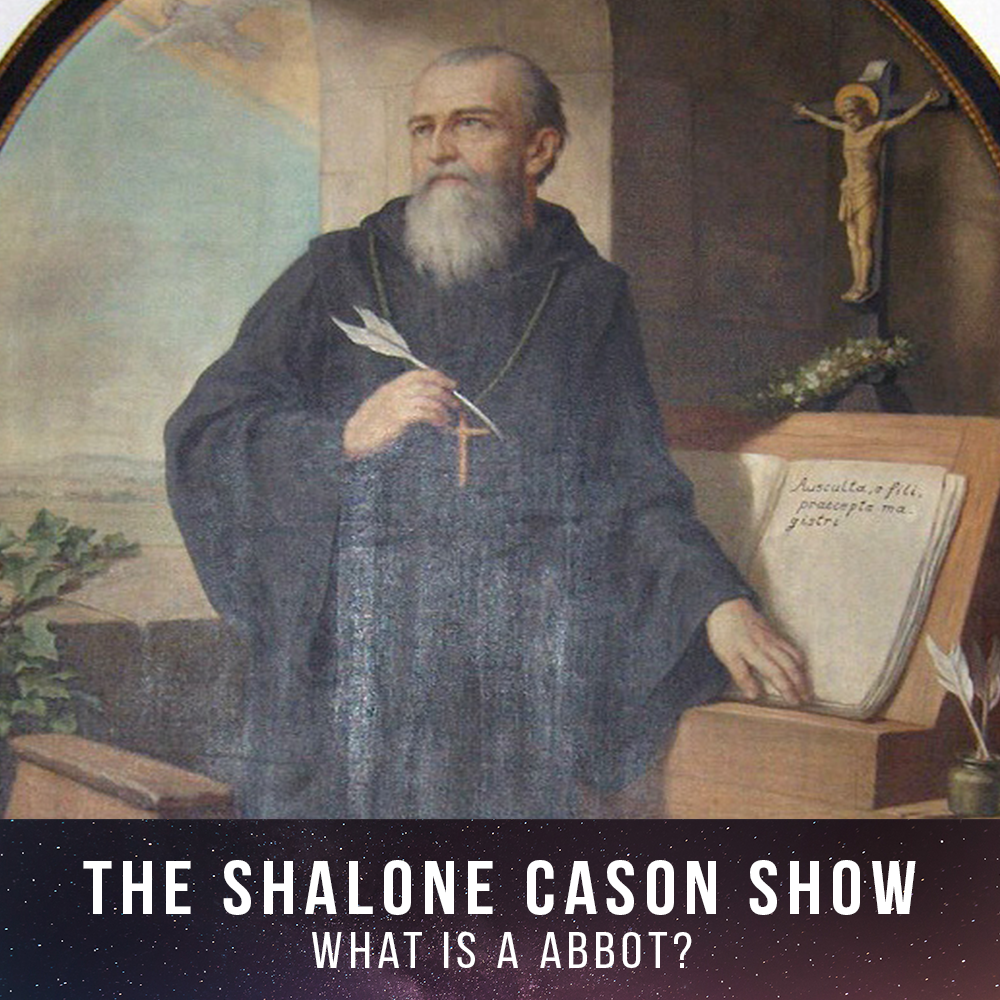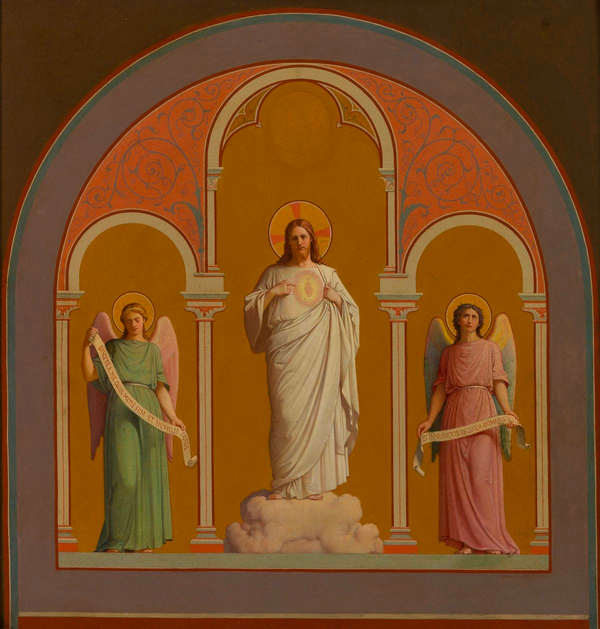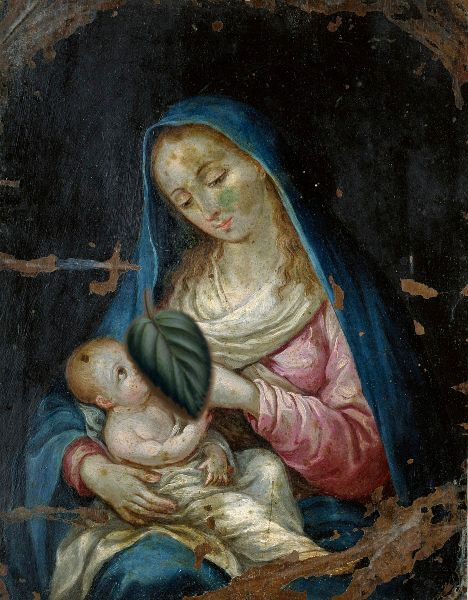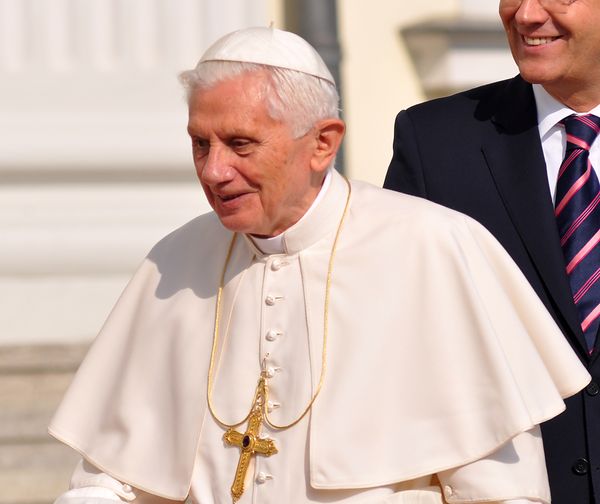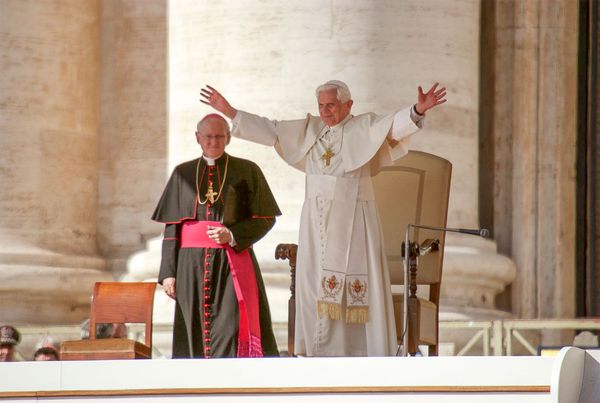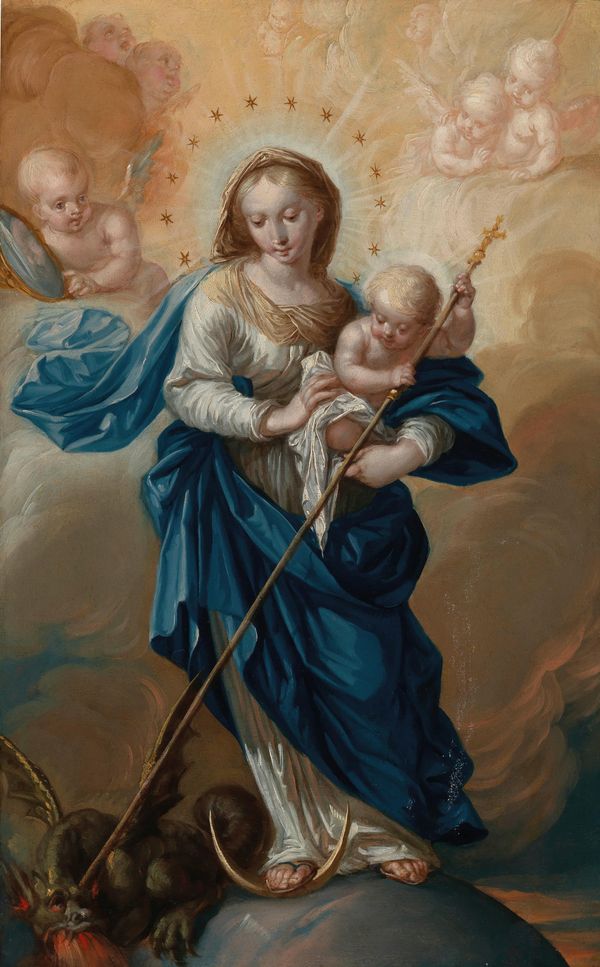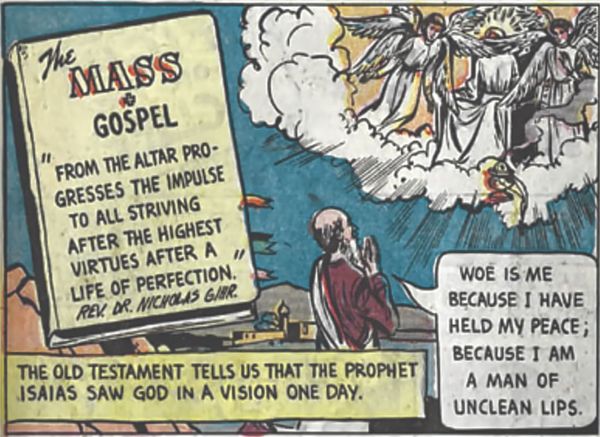Introduction
An abbot is the title given to the superior of a community of twelve or more monks. Abbots are in charge of a monastery and control the monastery's possessions, disciplines the monks, and gives blessings.
Terminology
The name is derived from abba, the Syriac form of the Hebrew ab, and means "father". In Syria, where it had its origin, and in Egypt, it was first employed as a title of honor and respect, and was given to any monk of venerable age or of eminent sanctity. The title did not originally imply the exercise of any authority over a religious community. From the East the word passed over to the West, and here it was soon received into general use to designate the superior of an abbey or a monastery.
History of Monasteries
Monastic communities were first organized in Egypt at the beginning of the fourth century. St. Anthony introduced one form of community life when, about the year A.D. 305, he undertook the direction and organization of the multitude of hermits who had gathered about him in the Thebaid; a second form of monastic life was instituted by St. Pachomius, who, about the same time, founded his first conventual monastery, at Tabennae in the far south of Egypt. Both systems spread rapidly and were soon firmly established in Palestine, Syria, Mesopotamia, and Asia Minor. By the middle of the fourth century monasteries had also made appearances in Europe, and here, at the beginning of the sixth century, St. Benedict of Nursia, gave it the definite form and constitution which ultimately assured its triumph in the West.
Monastic Superiors
Every group of hermits and monks naturally had its superior. The title given to the superior varied. In the East he was usually styled the elder, the senior, or also father of the monastery. In Asia Minor and among the Greeks generally he was called archimandrite (archos, a chief, and mandra, a fold, monastery) or hegumenos.
Originally there seems to have been no appreciable difference in the signification of these two words, but after the period of Justinian the title archimandrite was jealously reserved for the superiors of the older or of the more important monasteries. Both names have, however, been permanently retained, and are to this day the titles given to monastic superiors in the Eastern Church. Cassian, who at the beginning of the fifth century had transplanted Egyptian monasticism to Gaul, was addressed as Abbas, Pater, and Dominus.
St. Benedict, in his Rule, written about 529, restricted the use of the title abbas to the superior of the monastery. Through the Rule of the great Patriarch of Western Monasticism the application of the title abbas was definitely fixed, and its use made general in the West.
St. Benedict's Rule and How it Shaped Monastic Superiors
St. Benedict's conception of a monastic community was distinctly that of a spiritual family. Every individual monk was to be a son of that family, the, Abbot its father, and the monastery its permanent home. Upon the Abbot therefore, as upon the father of a family, devolves the government and direction of those who are committed to his care, and a paternal solicitude should characterize his rule. St. Benedict says that "an abbot who is worthy to have the charge of a monastery ought always to remember by what title he is called," and that "in the monastery he is considered to represent the person of Christ, seeing that he is called by His name" (Rule of St. Benedict, ii). The monastic system established by St. Benedict was based entirely upon the supremacy of the abbot. Though the Rule gives directions as to an abbot's government, and furnishes him with principles upon which to act, and binds him to carry out certain prescriptions as to consultation with others in difficult matters. the subject is told to obey without question or hesitation the decision of the superior.
It is of course needless to say that this obedience did not extend to the commission of evil. No one, and I mean no one can command you to do evil. Not your abbot if you’re a monk. Not your bishop if you’re a priest. Don’t forget that!
The obedience shown to the Abbot is regarded as obedience paid to God Himself, and all the respect and reverence with which he is treated by the brethren of his house is paid him for Christ's love, because as abbot — father — he is the representative of Christ in the midst of the brethren. The whole government of a religious house depends upon the Abbot. His will is supreme in all things; yet, as the Rule says, nothing is to be taught, commanded, or ordered beyond the precepts of the Lord.
Like I was saying before, rulers (including the pope, bishops, priests, and especially politicians and presidents) only have authority as far as God’s commands allow. If they are commanding people to go against God’s law, they are illegitimate. This is a touchy subject for some people, but it is an important one. It is important that you know God’s commands (the ten commandments and precepts of the church specifically) and that’s how you’ll know when one of your leaders is leading you the wrong way.
All the officials who are to assist an abbot in the government of the house, are appointed by him and have their authority from him. He may dismiss officials at his discretion. The Abbot, by virtue of his office, administers the temporal possessions of the community, exercises a general supervision for the maintenance of monastic discipline, provides for the keeping of the Rule, punishes and, if need be, excommunicates the monks, presides in choir during the recitation of the Office, and at Divine Service, and gives the blessings. In a word, uniting in his person the threefold office of father, teacher, and ruler, it is the duty of the Abbot to see that all things are administered wisely in the House of God.
Clerical Status of Abbots
Abbots, like the monks over whom they ruled, were originally laymen, and subject to the bishop of the diocese. It was not long, however, before they became priests. Towards the close of the fifth century by far the greater number of Abbots in the East had received ordination as priests. The change was effected more slowly in the West, but even here few were found at the end of the seventh century who had not been clothed with the dignity of the priesthood.
A council held at Rome, 826, under Pope Eugene II, enjoined the ordination of Abbots, but the canon seems not to have been rigidly enforced, for as late as the eleventh century we read of some Abbots who were still only deacons. The Council of Poitiers (1078) finally obliged all Abbots under pain of deprivation to receive priest's orders. From this time forward the power and influence of Abbots steadily increased in Church and State, until towards the close of the Middle Ages their position was everywhere regarded as one of the highest distinctions. In Germany eleven Abbots held rank as princes of the Empire, and with all the rights and privileges of princes took part in the deliberation of the Diets.
Diets were like the US congress or British parliament. Basically, it's when all the princes and politicians come together to discuss how to rule the nation. It’s interesting that Abbots, leaders of monasteries, were given the rights of princes in the German empire. I had no idea of that fact until writing this article!
Abbots Nowadays
To this very day In the Roman Catholic Church, abbots continue to be elected by the monks of an abbey to lead them as their religious superior in those orders and monasteries that make use of the term (some orders of monks, as the Carthusians for instance, have no abbots, only priors). A monastery must have been granted the status of an abbey by the pope, and such monasteries are normally raised to this level after showing a degree of stability—a certain number of monks in vows, a certain number of years of establishment, a certain firmness to the foundation in economic, vocational and legal aspects. Prior to this, the monastery would be a mere priory, headed by a prior who acts as superior but without the same degree of legal authority that an abbot has.
The abbot is chosen by the monks from among the fully professed monks. Once chosen, he must request blessing: the blessing of an abbot is celebrated by the bishop in whose diocese the monastery is or, with his permission, another abbot or bishop. The ceremony of such a blessing is similar in some aspects to the consecration of a bishop, with the new abbot being presented with the mitre, the ring, and the crosier as symbols of office and receiving the laying on of hands and blessing from the celebrant. Though the ceremony installs the new abbot into a position of legal authority, it does not confer further sacramental authority- it is not a further degree of Holy Orders (although some abbots have been ordained as bishops).
Once he has received this blessing, the abbot not only becomes father of his monks in a spiritual sense, but their major superior under canon law, and has the additional authority to confer the ministries of acolyte and lector (formerly, he could confer the minor orders, which are not sacraments, that these ministries have replaced). The abbey is a species of "exempt religious" in that it is, for the most part, answerable to the pope, or to the abbot primate, rather than to the local bishop.
The abbot wears the same habit as his fellow monks, though by tradition he adds to it a pectoral cross.
So now for a quick recap:
An abbot is the title given to the superior of a community of twelve or more monks. Abbots are in charge of a monastery and control the monastery's possessions, discipline of the monks, and give blessings. The name is derived from abba, the Syriac form of the Hebrew ab, and means "father". In Syria, where it had its origin, and in Egypt, it was first employed as a title of honor and respect, and was given to any monk of venerable age or of eminent sanctity. The title did not originally imply the exercise of any authority over a religious community. From the East the word passed over to the West, and here it was soon received into general use to designate the superior of an abbey or a monastery.
What can we learn from Abbots?
Let’s look at the moral virtues to see what we can learn from abbots. There are four of them. They are prudence: always moving toward virtue and away from vice. Justice: giving others what they deserve. Fortitude: staying faithful during difficulties. And Temperance: keeping balance in all areas of life. Abbots have to practice prudence and we should too. Abbots have control over large amounts of people and property. It’s not like a CEO, he doesn’t have control over his employees. The employees choose to work there in exchange for money. An abbot has absolute control, because monks vow to give their lives to God by following the abbot’s commands. We all have roles in our lives where we are in charge of someone or something.
We have to be prudent with all our decisions, especially when they directly affect other people. It is our duty to move closer to God as much as possible each day, and away from Satan and sin. Use prudence to do that. Ask God for help. Ask your guardian angel for help. Pray. pray. Pray. Follow the commandments. The concept of being holy is simple, but as Christ says, the road getting there is narrow and difficult to travel. But, with prudence and grace from God, you can do it. I believe in you.
This site is a place where public domain paintings, stock photos, and coloring pages are stored, categorized, and made searchable. Anyone can come here and use the category page in the menu or the search bar to find the perfect Catholic image for their project. Did I mention that all the images are free and creative commons? That means that you won't have to worry about copyright issues or stock photo fees.

